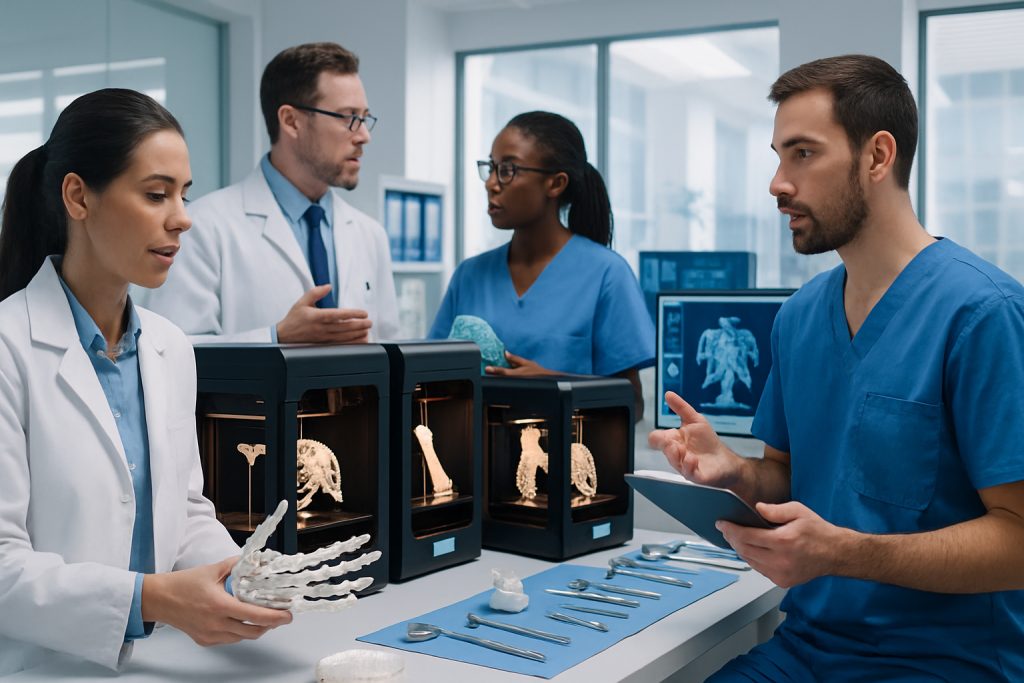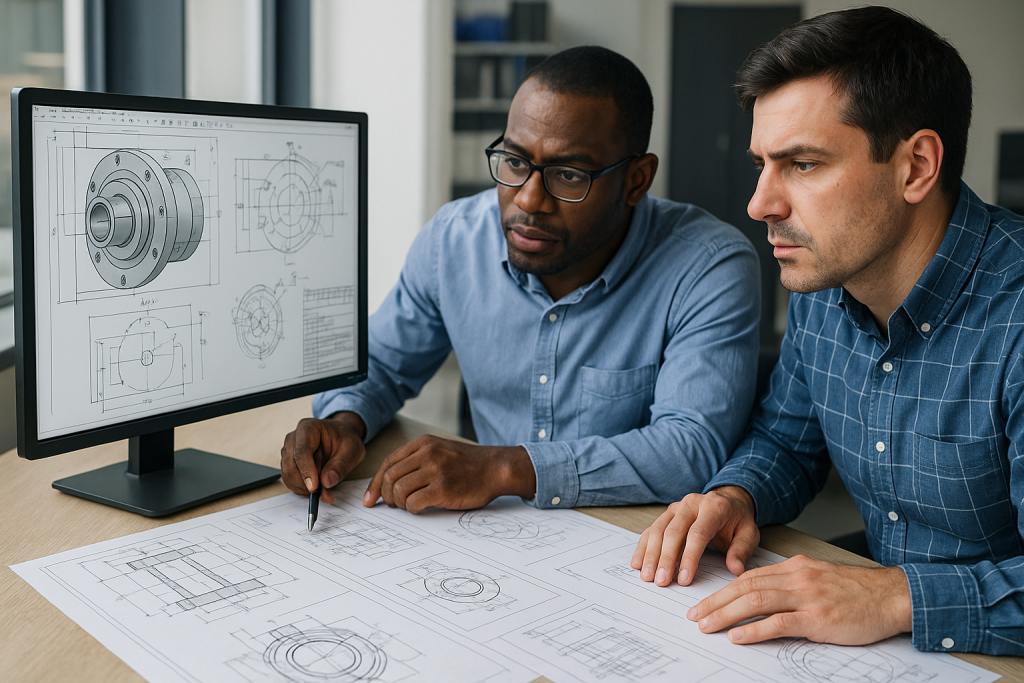
Rapid prototyping is transforming the way medical devices and healthcare solutions are developed. By quickly fabricating physical models directly from CAD designs using advanced techniques such as 3D printing and CNC machining, innovators can shorten design cycles, reduce risks, and deliver patient-specific solutions faster than ever.
In today’s highly regulated and competitive medical industry, speed and precision are paramount. That is why companies like Boona Prototypes play such a critical role, offering professional CNC machining and 3D printing services to support rapid iteration in medical device innovation.
I. Key Benefits of Rapid Prototyping in Medical Innovation
1. Faster Time-to-Market
Traditional prototyping methods can take weeks or even months, but with rapid prototyping, development cycles are reduced to just days. This accelerated pace allows medical startups and research institutions to validate ideas, secure approvals, and bring life-saving innovations to patients faster.
2. Cost Savings and Risk Reduction
Creating molds and tooling for every design iteration is costly. Rapid prototyping eliminates this need, allowing low-cost design validation at every stage. Early detection of flaws minimizes the risk of expensive late-stage failures.
3. Personalized and Patient-Specific Solutions
One of the most exciting applications is in personalized medicine. Custom prosthetics, implants, and surgical guides can be manufactured based on CT or MRI imaging data. This ensures a perfect fit, improving patient outcomes and surgical precision.
4. Improved Testing and Feedback
Rapid prototypes allow doctors, surgeons, and patients to evaluate design usability and ergonomics. Feedback from real-world testing ensures that final products are both functional and patient-friendly.
5. Regulatory Support
Medical devices require extensive documentation for approval by regulatory agencies such as the FDA or MDR. Physical prototypes generated through CNC machining and 3D printing help validate compliance with safety and performance standards.
6. Better Surgical Planning
3D-printed anatomical models give surgeons the ability to rehearse complex surgeries in advance. These models reduce uncertainty, improve precision, and ultimately enhance recovery times for patients.
II. How Boona Prototypes Supports Medical Innovation
Boona Prototypes offers a wide range of services that directly empower the medical sector, including:
-
CNC Machining Services: High-precision, 5-axis machining with tight tolerances ideal for surgical instruments, implants, and critical components.
-
3D Printing Services: Rapid fabrication of complex shapes and customized medical parts for testing and validation.
-
Fast Turnaround: Hybrid prototyping with both additive and subtractive methods ensures both speed and accuracy.
-
Material Flexibility: Wide selection of metals, plastics, and bio-compatible materials suitable for medical applications.
III. Technical Comparison of Prototyping Methods
| Technology | Typical Tolerance | Material Options | Application in Medicine | Lead Time |
|---|---|---|---|---|
| CNC Machining | ±0.01 mm | Metals (Aluminum, Titanium, Stainless Steel), Plastics | Surgical tools, implant prototypes, housings | 3–7 days |
| 3D Printing (SLA) | ±0.05 mm | Resins, Bio-compatible polymers | Anatomical models, dental and surgical guides | 1–3 days |
| 3D Printing (SLS) | ±0.1 mm | Nylon, composites | Functional prototypes, prosthetics, orthopedic devices | 2–5 days |
| DMLS (Metal 3DP) | ±0.05–0.1 mm | Titanium, Cobalt-Chrome, Stainless | Patient-specific implants, bone replacement parts | 3–7 days |
This data shows how different rapid prototyping techniques can be selected depending on the medical application, with CNC machining excelling in precision and 3D printing in customization and speed.
IV. Case Applications
-
Custom Surgical Guides – 3D-printed templates for bone cutting and implant placement.
-
Prosthetic Development – Rapid iteration of designs for patient-specific prosthetics.
-
Anatomical Models – Surgeons use these to rehearse complex operations.
-
Medical Device Housings – CNC machined enclosures for devices requiring durability and precision.
Conclusion
Rapid prototyping is no longer just a supporting tool—it has become the backbone of medical innovation. From reducing development costs to enhancing patient outcomes, it bridges the gap between design and clinical application.
With expertise in CNC machining and 3D printing, Boona Prototypes is at the forefront of enabling innovators, startups, and healthcare institutions to develop next-generation medical solutions quickly and reliably.
As the demand for personalized healthcare continues to grow, rapid prototyping will play an even greater role in shaping the future of medicine.
FAQs
1. What is rapid prototyping in the medical field?
Rapid prototyping in healthcare refers to the use of 3D printing and CNC machining to quickly produce functional models or parts based on digital CAD data. In medicine, it is used to create surgical tools, anatomical models, prosthetics, and patient-specific implants for faster innovation and better patient outcomes.
2. How does rapid prototyping benefit medical device development?
Rapid prototyping helps reduce time-to-market, lowers development costs, and allows multiple design iterations without expensive tooling. It also supports regulatory compliance by providing physical prototypes for safety and performance testing. Companies like Boona Prototypes provide the advanced machining and printing services needed to achieve these benefits.
3. Can rapid prototyping be used for patient-specific solutions?
Yes. Rapid prototyping enables custom implants, prosthetics, and surgical guides that are tailored to individual patients. Using CT or MRI scan data, engineers can design parts that fit perfectly, improving both surgical accuracy and recovery times.
4. What technologies are commonly used for rapid prototyping in medicine?
The main technologies include:
-
CNC Machining – for precision metal and plastic components.
-
Stereolithography (SLA) – for high-accuracy resin prototypes and surgical guides.
-
Selective Laser Sintering (SLS) – for durable nylon parts and prosthetics.
-
Direct Metal Laser Sintering (DMLS) – for titanium or cobalt-chrome patient implants.
Boona Prototypes offers both CNC machining and 3D printing, making it a one-stop solution for medical prototyping needs.
5. How does rapid prototyping support regulatory approval of medical devices?
Prototypes allow manufacturers to test function, biocompatibility, and usability early in the process. This documentation can be submitted to agencies like the FDA or MDR, speeding up approval timelines while ensuring compliance with safety standards.
6. Is rapid prototyping cost-effective for medical startups?
Yes. By eliminating the need for expensive molds and enabling low-volume production runs, rapid prototyping reduces initial investment. Startups can validate their designs with small-scale, high-quality prototypes before moving into mass production.
7. What materials are used in medical rapid prototyping?
Depending on the method, common materials include:
-
Titanium & Stainless Steel – for surgical instruments and implants.
-
Medical-Grade Resins – for surgical guides and anatomical models.
-
Nylon & Composites – for prosthetics and orthopedic devices.
Boona Prototypes provides a wide selection of metals, plastics, and polymers suitable for medical applications.
8. How fast can a medical prototype be produced?
Depending on complexity, a prototype can be produced within 1–7 days using 3D printing or CNC machining. This speed allows faster clinical validation and helps healthcare innovators respond quickly to patient needs.



